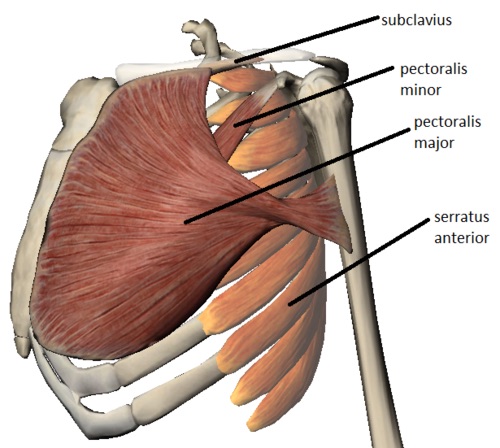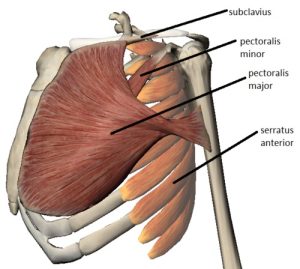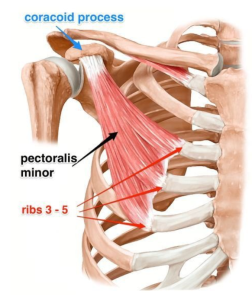
Pectoralis Major and Pectoralis Minor Muscle
The Pectoralis Major is a thick, fan-shaped, or triangular convergent muscle of the human chest. It makes up the bulk of the chest muscles, lying underneath the breast. Beneath the pectoralis major is the pectoralis minor muscle. It is thick, fan-shaped, and originates from multiple places along the medial and superior chest: anterior sternum, clavicular head, sternal end of rib 6, superior six costal cartilages, and from the aponeurosis of the external oblique. The main function of this chest muscle as a whole is the adduction and internal rotation of the arm in the shoulder joint. Acting independently, the clavicular part helps to flex the extended arm up to 90°, while the sternocostal part facilitates the extension of the flexed arm by pulling it downwards.

The Pectoralis Minor muscle is a thin, triangular muscle, situated at the upper part of the chest, beneath the pectoralis major in the human body. It arises from ribs III-V; it inserts onto the coracoid process of the scapula. It is innervated by the medial pectoral nerve. Its function is to stabilize the scapula by holding it fast in position against the chest wall. The pectoralis minor is much thinner and triangular in shape and resides below the major. It originates from the margins of the third to fifth ribs adjacent to the costochondral junction.

How do tight pectorals occur? People often complain of tight pectoral muscles if they do a large amount of upper limb exercises in the gym. These include chest and bench presses which are not counterbalanced with other exercises. This is known as a muscle imbalance injury.

Leave a Reply